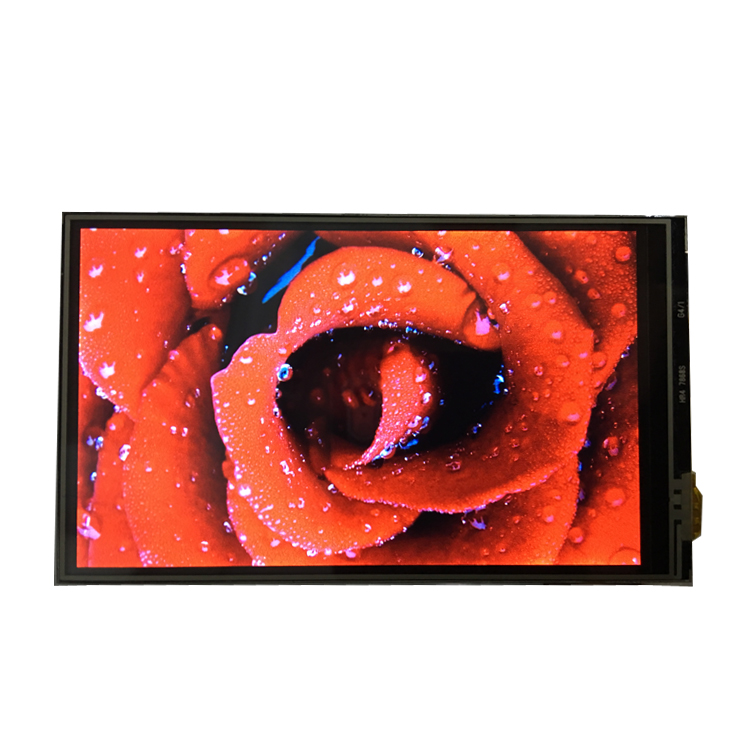Everything you need to know about LCD screens
Blaze Display Technology Co., Ltd. | Updated: Nov 27, 2018
Today I will give a brief introduction to the function of LCD!
Principle:
The luminous principle of LCD mainly depends on the backlight layer, which is usually composed of a large number of LED backlights. It has only one function, which is to display white light, but white light cannot form an image, so add a layer on the white backlight layer For colored films, the white backlight can display colors after penetrating the colored film, but the ratio of red, green and blue needs to be adjusted, so that the light cannot directly pass through the red, green and blue, but passes through the liquid crystal layer. Change the magnitude of its two-pole voltage to control the arrangement of liquid crystal molecules, so that the large opening and closing will emit more light, and the small opening and closing will emit less light, so as to control the amount of white light, so that red and green can be adjusted. The blue match.
Contrast ratio:
The control IC, optical filter and orientation film and other accessories used in LCD manufacturing are related to the contrast ratio of the panel. For general users, a contrast ratio of 350:1 is enough, but in the professional field, such a contrast ratio is not enough. Can not meet the needs of users. Compared with the contrast ratio of 500:1 or even higher easily achieved by CRT monitors, only high-end LCD monitors can achieve such a level. The LCD monitors of first-tier brands such as Samsung, ASUS, and LG in the market can reach the level of 1000:1 contrast ratio, but because the contrast ratio is difficult to measure accurately through instruments, you still have to see it yourself when you choose it.
Brightness:
LCD is a substance between solid and liquid. It cannot emit light by itself and needs an additional light source. Therefore, the number of lamp tubes is related to the brightness of the liquid crystal display. The earliest liquid crystal display only had two upper and lower lamp tubes. Up to now, the lowest popular type has four lamps, and the high-end one has six lamps. The design of four light tubes is divided into three arrangements: one is that there is one light tube on each of the four sides, but the disadvantage is that there will be black shadows in the middle. The solution is to arrange the four light tubes horizontally from top to bottom. The last one is a "U"-shaped arrangement, which is actually two lamp tubes produced by two lamps in disguise. The design of six lamp tubes actually uses three lamp tubes, and the manufacturer bends the three lamp tubes into a "U" shape, and then places them in parallel to achieve the effect of six lamp tubes.
Signal response time:
Response time refers to the response speed of the liquid crystal display to the input signal, that is, the response time of the liquid crystal from dark to bright or from bright to dark, usually in milliseconds (ms). To clarify this point, we have to start with the human eye's perception of dynamic images. There is a phenomenon of "visual residue" in the human eye, and the high-speed moving picture will form a short-term impression in the human brain. The latest games, such as cartoons and movies, have applied the principle of visual residue, allowing a series of gradually changing images to be displayed in quick succession in front of people's eyes to form a dynamic image. The picture display speed that people can accept is generally 24 frames per second, which is also the origin of the movie playback speed of 24 frames per second. If the display speed is lower than this standard, people will obviously feel the pause and discomfort of the picture. Calculated according to this index, the display time of each picture needs to be less than 40ms. In this way, for liquid crystal displays, the response time of 40ms becomes a hurdle, and displays with a response time lower than 40ms will have obvious screen flickering, which makes people feel dizzy. If you want the image screen to reach the level of no flicker, it is best to achieve a speed of 60 frames per second.
Viewing angle:
The viewing angle of LCD is a troublesome problem. When the backlight passes through the polarizer, liquid crystal and alignment layer, the output light has directionality. That is to say, most of the light is emitted vertically from the screen, so when viewing the liquid crystal display from a certain larger angle, the original color cannot be seen, or even all white or all black can be seen. In order to solve this problem, manufacturers have also begun to develop wide-angle technologies. So far, there are three popular technologies: TN FILM, IPS (IN-PLANE-SWITCHING) and MVA (MULTI-DOMAIN VERTICAL alignment).


